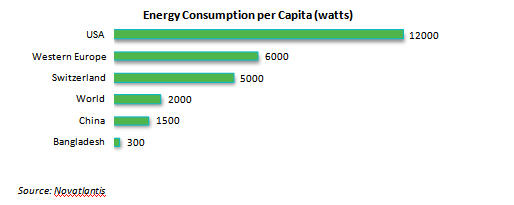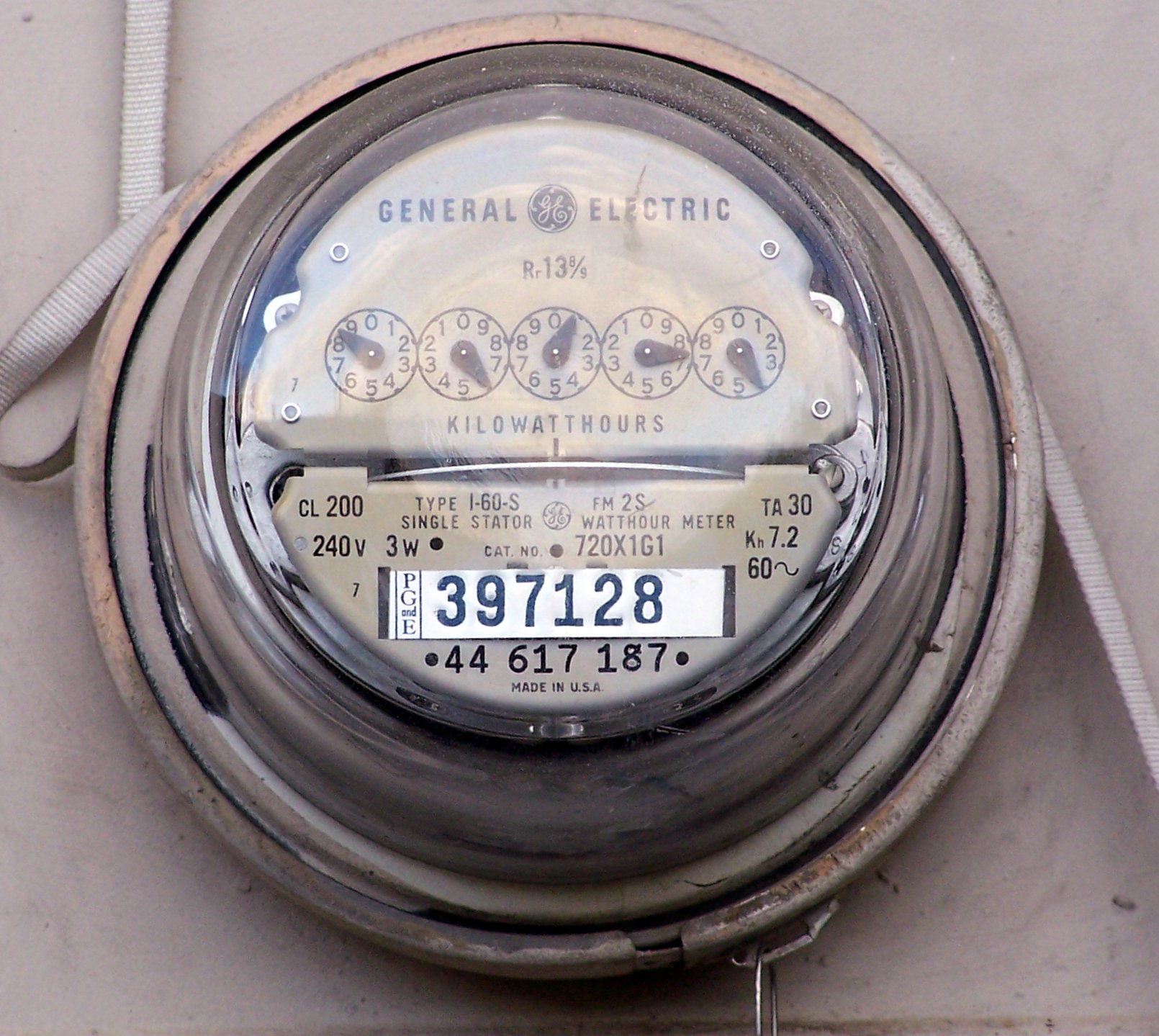What would cutting your energy consumption by two-thirds mean for your way of living? Most people in the developed world would fear the worst, a return to candles and chilly houses. Not so the Swiss. Since 1998, they have increasingly embraced this ambitious vision in the form of the 2000–Watt Society, conceived by scientists at the Federal institute of Technology (Eidgenössiche Technische Hochschule Zurick or ETHZ).
The big idea: Small power.
2,000 watts is the average amount of energy consumed by every person on the planet continuously, which works out to the slightly less catchy number of 17,500 kilowatt hours per person per year. This is a number which scientists believe is sustainable, but given the potential 40% increase in global energy demand projected by the IEA in the next twenty-five years, one that will be hard to achieve. Currently, there are huge disparities in energy consumption as shown below:

For Switzerland, where 60% of energy consumed is based on fossil fuels, the big idea of the 2000-Watt Society includes achieving drastically lower carbon emissions by reducing fossil fuel usage to just 25% of the energy use total. It is billed as a creative approach to the future, applying technologies already available or in development to help counter the future threat of energy scarcity, while at the same time improving living standards.
Is it doable? Estimates made by the ETHZ scientists have confirmed it is definitely achiveable, but will require investment in the country’s assets, including buildings to reach low energy building standards, transportation (road, rail and aviation), the use of renewable energy sources, advanced materials – and the awareness and adoption of more energy efficient living by consumers, whether in choice of appliances or in travel. Given the magnitude of the changes required the time horizon for this thought experiment is estimated to be 50 years or more.
Yet, the challenge has increasingly captured the imagination of both politicians and consumers. The “urban laboratory” pilot in the Basel metropolitan region has extended to Zurich and Geneva, involving partnerships between industry, universities, research institutes and the local authorities. New buildings are being built to MINERGIE energy efficiency standards, electricity generation from renewable sources is being increased, new approaches to transport are being adopted and some Swiss companies are anticipating being able to develop zero-heating energy buildings.
Consumers are also getting in on the act, inspired by the scale of the challenge. A recent CBS news bulletin covering the 2000-Watt Society’s initiative suggested that while none of the families interviewed had yet met the 2000 watt goal, they had discovered proven technology which allowed them to at least halve ordinary family energy consumption. And the numbers of people involved is growing.
This is when the power of an idea that started small (in the lab) can become big. The combination of an aspirational target, the awareness of the relevant technology and now new devices and tools to measure and visualize home energy consumption (e.g. a new visualization tool for home appliances from GE and Pentagram’s Lisa Strausfeld –see the FastCompany article below) mean consumers can now play a role. The opinion polls say they want to, the reality is that they will if it is easy. Most importantly the aims of the 2000-Watt Society do not necessarily inhibit consumer lifestyles – it is about making smarter choices in the long-term, which contribute to tackling the pressing global issue of resource scarcity.
So what should you and your organization be asking yourselves?
- If they can do it, why can’t we (after all it will save money)? What are the lessons we can learn from these pilots in radically changing our energy usage?
- Tackling such resource issues will take time because radical changes may be needed. How do we shift towards thinking in a longer time horizon, and balance our investment planning and R&D appropriately with the short-term requirements?
- How can we make it easy for our customers/consumers to join us on the journey to use resources more efficiently?
- Beyond the energy question, how do we best use the power of aspirational goals to motivate ourselves and our people? How do we move our mindset beyond what we CAN do to what we MUST do to succeed over time?

Suggested Reading
Explore the 2000-Watt Society website at http://www.novatlantis.ch/index.php?id=5&L=1
“The Island in the Wind” by Elizabeth Klobert, http://www.newyorker.com/reporting/2008/07/07/080707fa_fact_kolbert
“Switzerland and the 200-Watt Society” by K. John Morrow Jr., Ph.D., and Julie Ann Smith-Morrow, Ph.D., http://www.novatlantis.ch/fileadmin/downloads/2KW_article_in_Sustainability_Magazine.pdf
“The Quest for 2000-Watt Living” by Elizabeth Palmer, http://www.cbsnews.com/8301-503543_162-5981089-503543.html?tag=contentMain%3bcontentBody
“Infographic: Is This Old AC Really Destroying the World?!” by Suzanne LaBarre, http://www.fastcompany.com/1638594/new-data-visualization-tool-pinpoints-household-polluters-suggests-greener-options
Disclaimer
While we provide links to third-party websites where you can access the original content referenced in this brief, Strategy Dynamics Global Limited has no responsibility for these websites, which are governed by the Terms of Use and privacy policies, if any, of the applicable third-party content providers.




